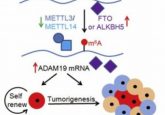A more sensitive mammalian two-hybrid assay

By optimizing various aspects of the mammalian two-hybrid system, researchers have greatly improved its ability to detect weak protein-protein interactions.

The two-hybrid technique is a well-established cell-based method for analyzing protein–protein interactions. Originally developed for use in yeast, the system was later adapted for mammalian cells. The mammalian two-hybrid (M2H) assay allows analysis of interactions between mammalian proteins that require post-translational modifications to function properly.
A major issue with the M2H system, however, is its low sensitivity for weak interactions. In the May issue of BioTechniques, Thomas Czerny and his colleagues at the University of Applied Sciences in Vienna describe an inducible M2H (iM2H) method with greatly improved sensitivity.
The researchers used a stronger DNA-binding domain (DBD) than the standard yeast GAL4 DBD and optimized the number of target binding sites in the reporter construct. Since prior attempts to boost the activity of the prey protein-activation domain (AD) fusion by attaching multiple copies of the AD to the prey protein resulted in rapid degradation, the authors instead induced the multimerization of separate ADs to each prey protein using rapalog, a small-molecule dimerizer. These improvements together resulted in up to a 100-fold increase in sensitivity compared to standard M2H approaches.



